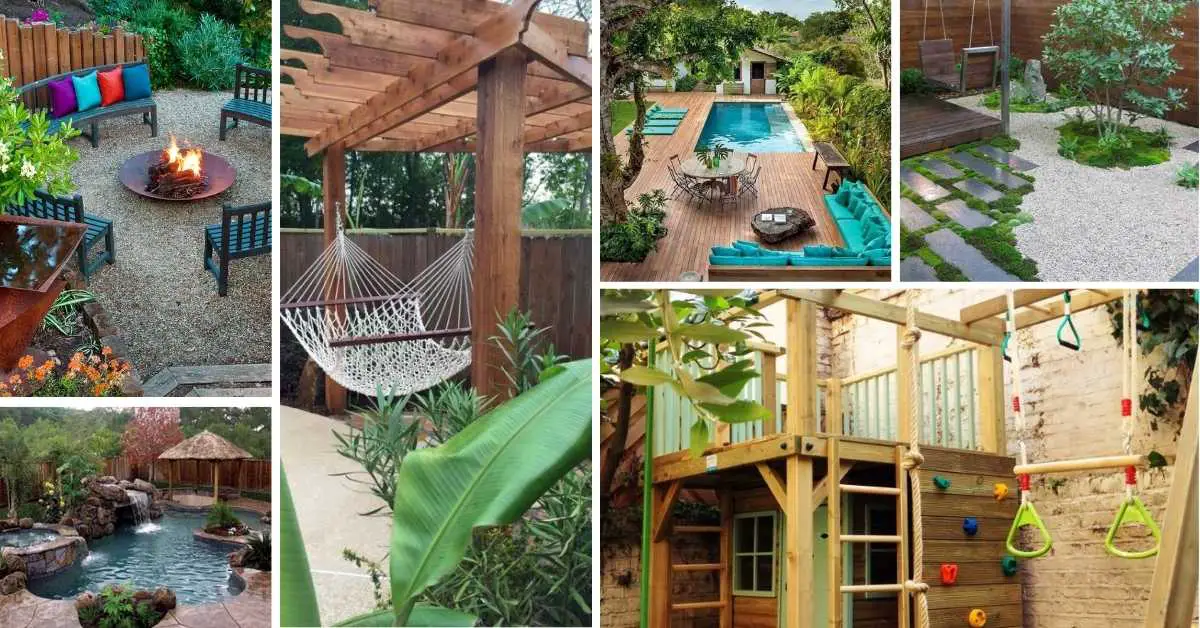If you’re interested in gardening, especially in places where the sun is strong and rain is rare, choosing Drought-Tolerant Plants is a smart move. These plants need less water, which means they are easier to care for and can survive in tough conditions. This type of gardening not only saves water but also makes your garden thrive even during dry seasons.
Drought-tolerant plants are perfect for areas that get a lot of sun because they are built to handle the heat without needing constant watering. This makes them ideal for saving time and conserving water resources. By choosing these plants, you’re not only making gardening easier but also helping the environment by reducing water use.
In this blog post, we’ll explore 19 different plants that love the sun and don’t mind going a bit thirsty. We’ll look at each plant’s needs like soil type, water, when to plant them, and why they are a great choice for your garden. Whether you’re a seasoned gardener or just starting, these plants can make your garden both beautiful and resilient.
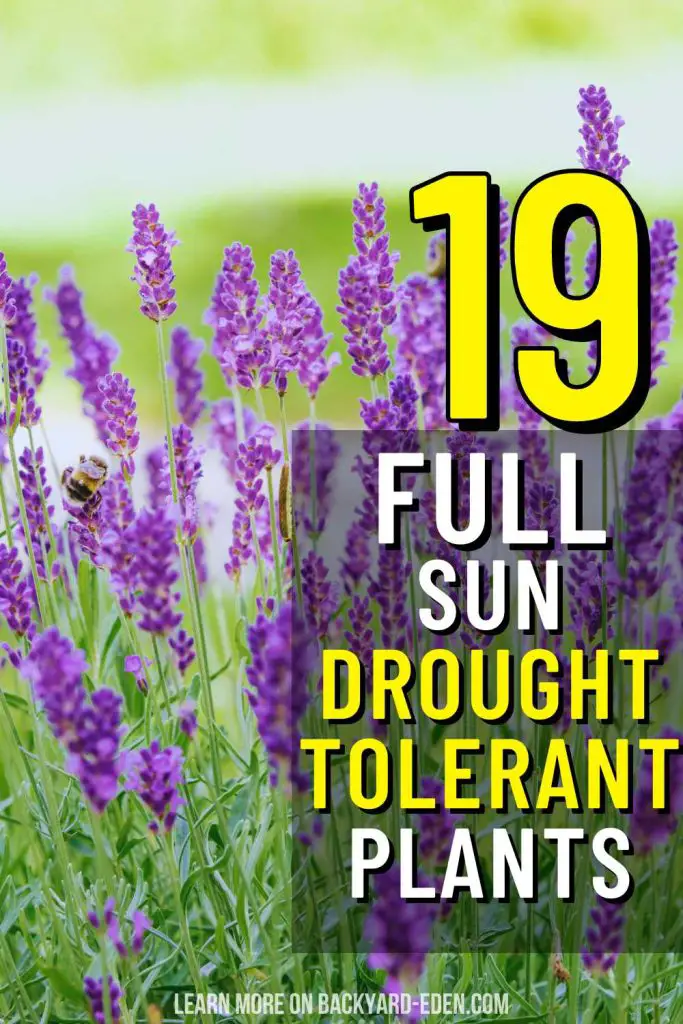
Full Sun Drought Tolerant Plants
1. Lavender
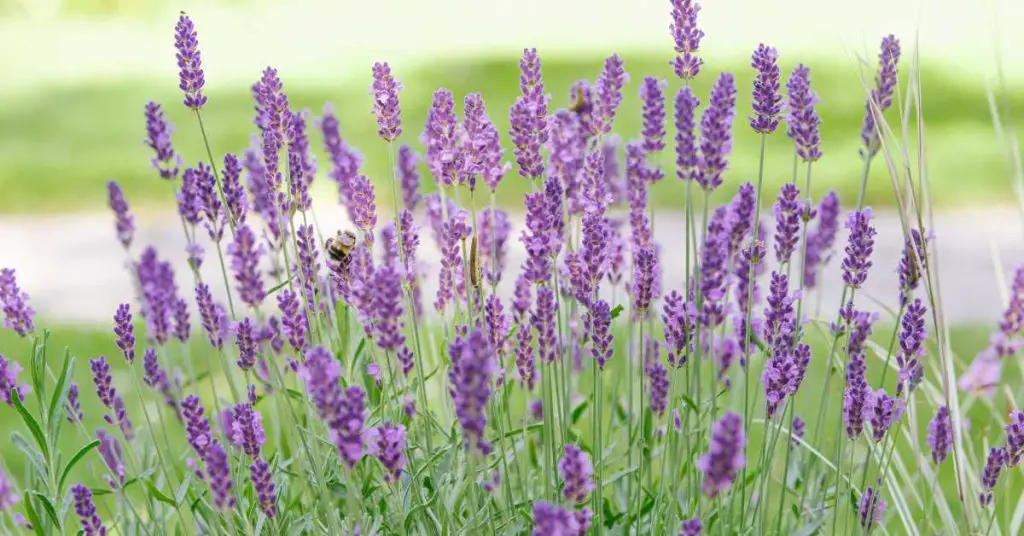
Essential Information About Lavender
- Type of Plant: Herb
- Soil Requirements: Prefers well-draining, slightly alkaline soil.
- Water Requirements: Low; water sparingly once established.
- Growing Habit: Lavender grows in a bushy form and can spread up to 24 inches.
- Bloom Time: Typically blooms from late spring to early summer.
- Best Time to Plant: The best times to plant lavender are in early spring or fall.
Why You Should Consider Growing Lavender?
Lavender is not just famous for its soothing fragrance; it’s also known for its ability to thrive with minimal water. This herb is a favorite among gardeners who prefer low-maintenance plants. It’s particularly suited for gardens in full sun and dry conditions.
Lavender attracts pollinators like bees and butterflies, adding life and color to your garden. Plus, its beautiful purple flowers make it a decorative addition to any outdoor space.
Lavender Growing Tips
To get the best out of your lavender plants, make sure they are planted in a spot that receives full sun for most of the day. The soil should be well-drained to prevent root rot, which lavender is particularly sensitive to.
Once established, lavender needs very little care—just occasional watering and annual pruning to keep it looking tidy and to promote new growth. This plant is also great for creating borders or adding to rock gardens because of its decorative look and drought-resistant nature.
In addition to its beauty and ease of care, lavender can be harvested for its aromatic flowers, which are used in everything from perfumes to culinary dishes. Its versatility and resilience make it an excellent choice for both novice and experienced gardeners.
2. Sedum (Stonecrop)
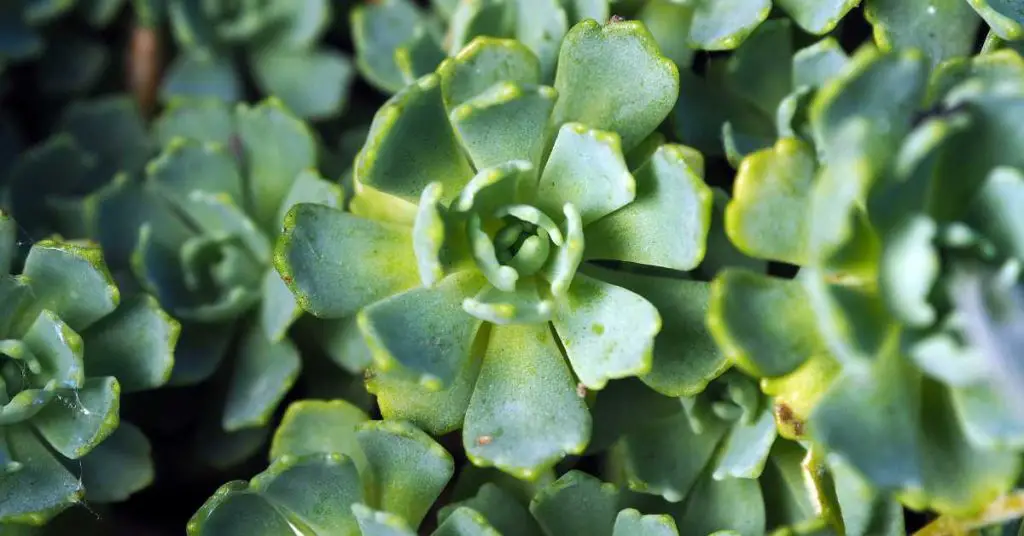
Key Details About Sedum
- Type of Plant: Succulent
- Soil Requirements: Thrives in well-draining, poor quality soils.
- Water Requirements: Minimal; allow the soil to dry out completely between watering.
- Growing Habit: Sedum has a low-growing, spreading habit.
- Bloom Time: Flowers from late summer to fall.
- Best Time to Plant: Spring is the best time to plant Sedum.
Why Grow Sedum in Your Garden?
Sedum, or Stonecrop, is a robust, drought-tolerant plant that makes an excellent addition to any sunny garden. It’s incredibly easy to grow and care for, making it a perfect choice for beginners or those gardeners who prefer low-maintenance plants.
Sedum comes in various colors and shapes, providing a beautiful texture and hue to garden landscapes, especially rock gardens and ground covers.
Sedum Growing Tips
Sedum plants prefer sunny locations where they can soak up at least six hours of sunlight a day. These plants are ideal for areas of your garden where other plants might struggle to survive.
The key to successful Sedum growth is well-draining soil; they do not like wet feet and can easily succumb to root rot if the soil is too moist.
Once established, Sedum plants require very little attention. They are resilient to pests and diseases, which further reduces the need for maintenance.
Sedum is not only practical and beautiful but also attracts a variety of pollinators, including bees and butterflies, which help to pollinate your garden effectively. Its ability to withstand dry conditions without frequent watering makes it an eco-friendly choice for your garden.
Sedum’s thick leaves can add a unique texture to your plant compositions, making it a favorite among landscape designers.
3. Yarrow
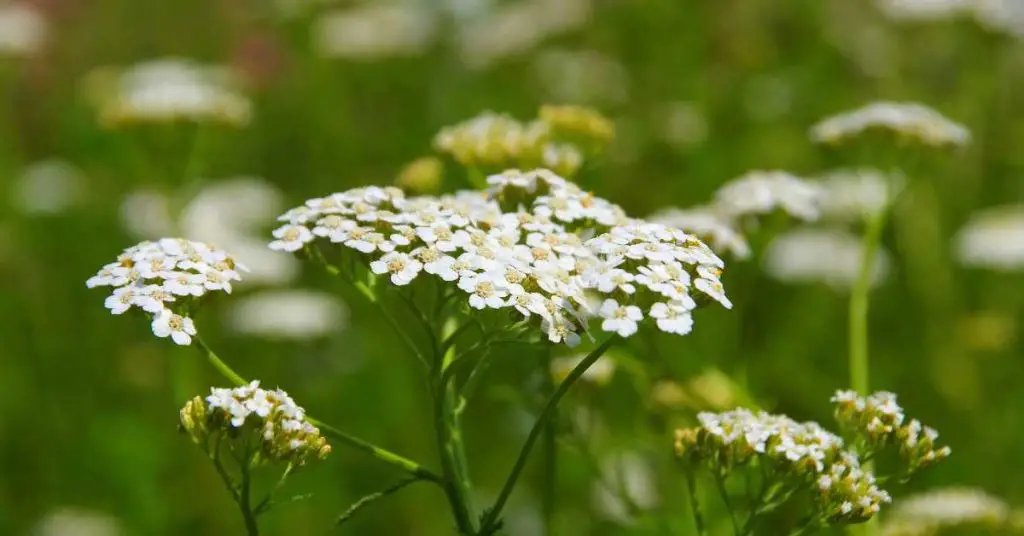
Key Details About Yarrow
- Type of Plant: Perennial herb
- Soil Requirements: Prefers well-draining, average to poor soil.
- Water Requirements: Drought-tolerant once established, requiring minimal watering.
- Growing Habit: Yarrow grows in a clumping form and can spread to form dense patches.
- Bloom Time: Flowers from early to late summer.
- Best Time to Plant: Plant yarrow in the early spring.
Why Grow Yarrow in Your Garden?
Yarrow is an excellent choice for gardeners looking to add a splash of color while keeping maintenance low. It produces a high volume of flowers, which are available in shades of yellow, white, pink, and red, making it a versatile choice for any garden color scheme.
Besides its beauty, yarrow is known for its medicinal properties and is often used in herbal remedies.
Yarrow Growing Tips
Yarrow is remarkably easy to grow. It thrives in full sun but can tolerate partial shade, although this may reduce blooming. Yarrow is not picky about soil as long as it drains well.
After planting, water the yarrow regularly until it’s established, and then you can reduce watering, as it’s very drought-tolerant.
Yarrow can spread quite aggressively, so it’s a good idea to check its growth and divide the plants every few years to manage its spread.
This plant is not only a beautiful addition to your garden but also a practical one. It attracts beneficial insects, including pollinators like bees and butterflies, and predators of common garden pests, such as ladybugs.
This makes yarrow a natural choice for an eco-friendly garden that encourages biodiversity. Moreover, yarrow’s ability to withstand dry spells without much care makes it ideal for busy gardeners or those in drier climates.
4. Russian Sage
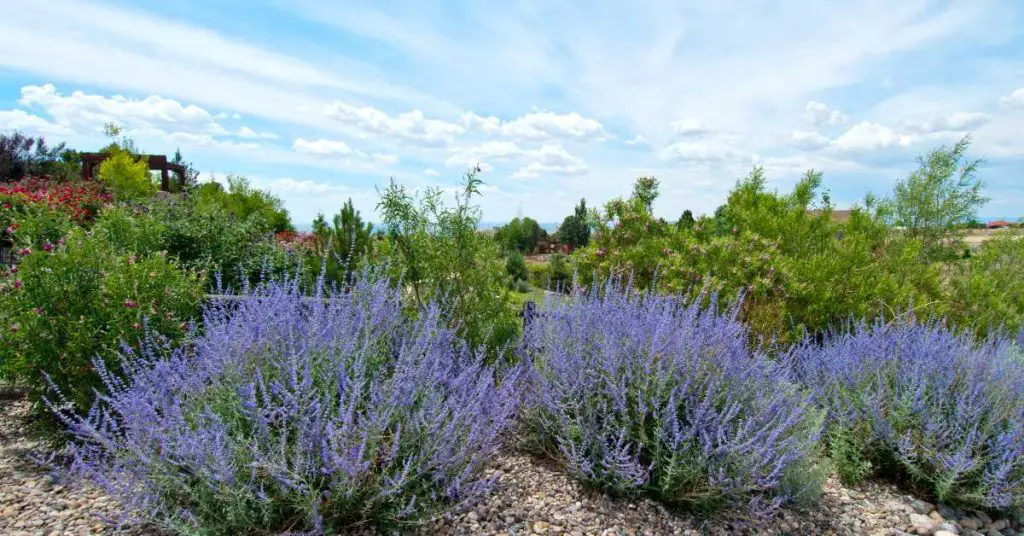
Essential Information on Russian Sage
- Type of Plant: Perennial shrub
- Soil Requirements: Prefers well-draining, average soil.
- Water Requirements: Low; once established, it requires minimal watering.
- Growing Habit: Russian Sage grows upright and bushy.
- Bloom Time: Blooms from mid-summer to late fall.
- Best Time to Plant: Plant in the spring or fall for best results.
Why Russian Sage is a Garden Must-Have
Russian Sage is a standout plant due to its tall, spiky appearance and beautiful lavender-colored flowers. It’s perfect for adding height and color to your garden, especially in areas that receive full sun.
Russian Sage is incredibly resilient, able to withstand both drought and cold once established. Its aromatic leaves are also a deterrent to deer and rabbits, making it an excellent choice for gardens troubled by these visitors.
Russian Sage Growing Tips
For the best growth, plant Russian Sage in a location that gets full sun for most of the day. It’s not too picky about soil type, but well-draining soil is essential to prevent root rot. Once your Russian Sage is planted, water it regularly until it’s established.
After that, it will need very little care. This plant can grow quite large, so make sure to give it plenty of space to spread out.
Russian Sage is not just a pretty face; its long blooming period provides lasting beauty in your garden from summer through fall. It’s also a favorite among pollinators, attracting bees and butterflies, which contribute to a healthy garden ecosystem.
Whether used as a backdrop for other plants or as a standalone feature, Russian Sage is sure to make a statement in your garden. Its ease of care and stunning visual appeal make it a top choice for gardeners looking for drought-tolerant, full-sun plants.
5. Agave
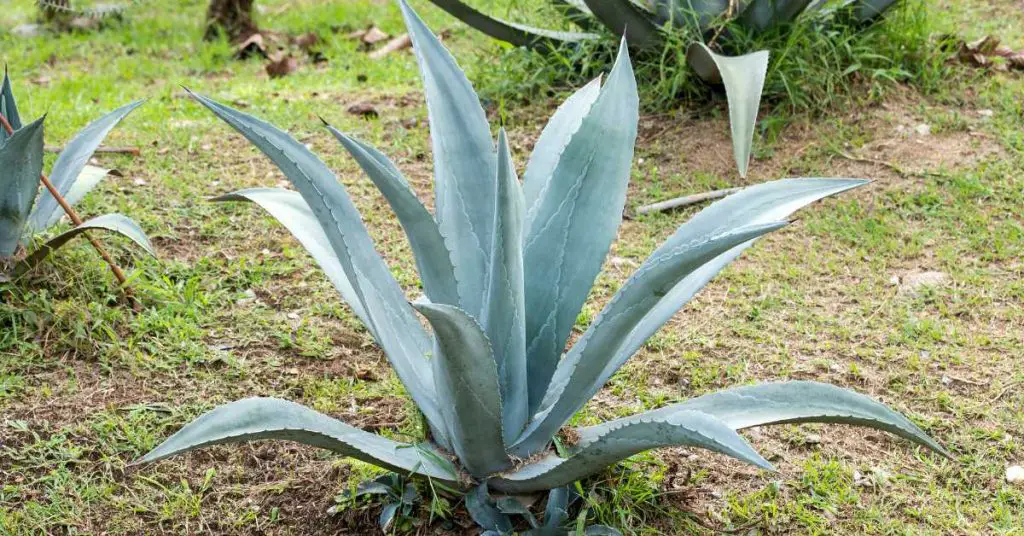
Essential Details About Agave
- Type of Plant: Succulent
- Soil Requirements: Prefers well-draining, sandy soil.
- Water Requirements: Very low; drought-tolerant and requires infrequent watering.
- Growing Habit: Agave grows in a distinctive rosette shape.
- Bloom Time: Blooms once in its lifetime, typically after many years, then the plant dies.
- Best Time to Plant: Spring is the ideal time to plant Agave.
Why Agave is a Brilliant Choice for Your Garden
Agave is an excellent plant for gardeners who want a low-maintenance yet striking feature in their garden. Its thick, fleshy leaves form beautiful rosettes that can vary in size from small and compact to large and imposing.
The dramatic appearance of Agave, with its sharp lines and often spiky edges, makes it a popular choice for modern garden designs and xeriscapes.
Agave Growing Tips
Agave thrives in full sun and requires very little care once established. It’s essential to plant Agave in well-draining soil to prevent water from pooling at the roots, which could cause rot.
Water sparingly, only when the soil has completely dried out from the previous watering. Agave is very slow-growing and requires patience, but its architectural beauty is worth the wait.
Agave plants are not only drought-resistant but also generally resistant to pests. Their robust nature makes them ideal for gardeners in hot, dry climates who want to ensure their garden remains vibrant with minimal effort.
Moreover, when an Agave finally blooms, it produces a spectacular tall flower spike that can be a real conversation starter.
While Agave does not bloom often, the unique lifecycle of this plant adds an element of anticipation to gardening. Its longevity and striking presence make it a focal point in any landscape, providing both aesthetic appeal and practical benefits as a drought-tolerant plant.
6. Sage (Salvia)
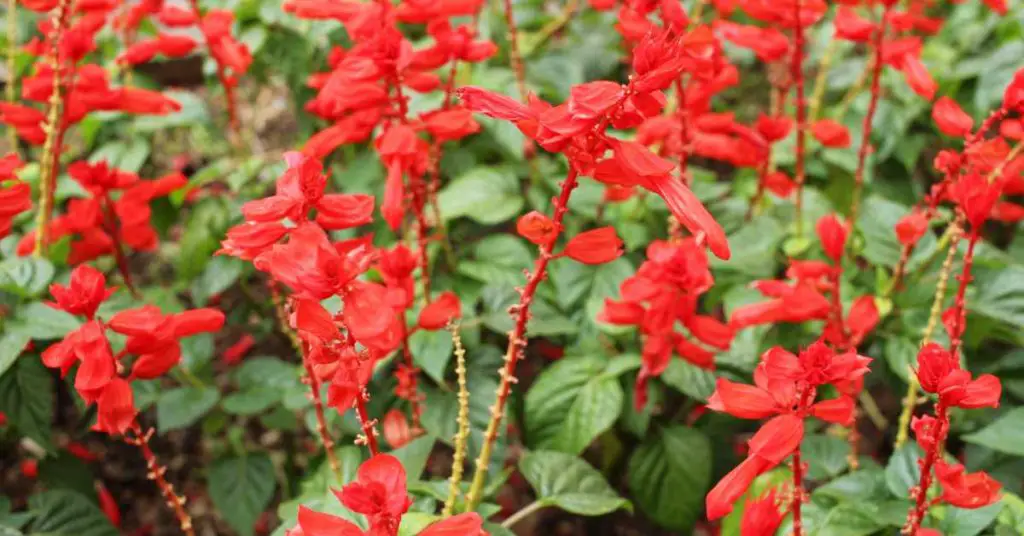
Essential Information on Sage (Salvia)
- Type of Plant: Perennial, Herb
- Soil Requirements: Well-draining, fertile soil.
- Water Requirements: Moderate to low once established; drought-tolerant.
- Growing Habit: Upright, bushy.
- Bloom Time: Blooms in late spring to early summer.
- Best Time to Plant: Plant in spring or fall.
Why Grow Sage in Your Garden
Sage, with its aromatic leaves and attractive flowers, is a versatile plant that adds both culinary and ornamental value to your garden. It’s particularly known for its resilience to dry conditions and ability to thrive in full sun.
The plant produces flowers that attract pollinators, making it a beneficial addition to any garden aiming to support local ecosystems.
Sage Growing Tips
Sage prefers full sun and can tolerate partial shade but thrives best and produces more aromatic leaves in sunny locations. It needs well-draining soil and should be watered regularly until established.
After it has matured, sage requires very little maintenance and can withstand long periods without water, making it perfect for drought-tolerant landscapes. Prune regularly to encourage growth and prevent the plant from becoming woody.
7. Echinacea (Coneflower)
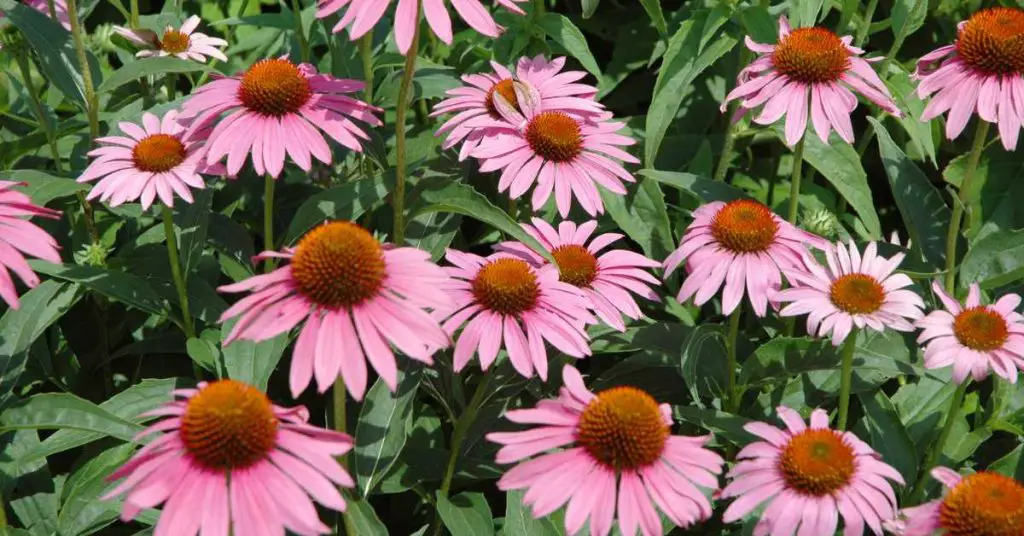
Key Details About Echinacea (Coneflower)
- Type of Plant: Perennial
- Soil Requirements: Well-draining, fertile soil.
- Water Requirements: Drought-tolerant once established.
- Growing Habit: Upright, with a tall central stalk.
- Bloom Time: Mid-summer to early fall.
- Best Time to Plant: Early spring or late fall.
Why Grow Echinacea in Your Garden
Echinacea, commonly known as coneflower, is renowned not only for its vibrant and large flowers but also for its medicinal properties. It is an excellent choice for adding color to your garden throughout the summer and autumn.
This plant is very attractive to pollinators, such as bees and butterflies, enhancing the biodiversity of your garden.
Echinacea Growing Tips
Echinacea thrives in full sun but can manage in partial shade. It prefers fertile, well-draining soil but can tolerate poor soil conditions once established. Water regularly during the first growing season to establish roots.
After establishment, Echinacea is very drought-resistant and requires minimal care, making it an ideal plant for low-maintenance gardens.
8. Cacti
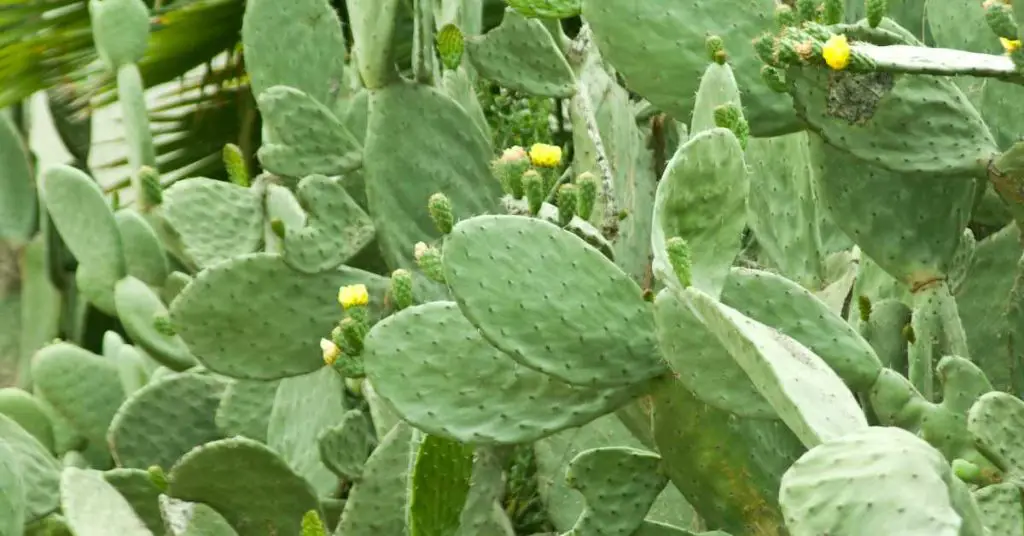
Essential Information on Cacti
- Type of Plant: Succulent
- Soil Requirements: Requires well-draining, sandy or gravelly soil.
- Water Requirements: Very low; water infrequently once established.
- Growing Habit: Varies widely among species
- Bloom Time: Most cacti bloom in the spring, but this can vary.
- Best Time to Plant: Late spring, after the threat of frost has passed.
Why Grow Cacti in Your Garden
Cacti are perfect for gardeners looking for unique, low-maintenance plants that can withstand harsh, dry conditions.
With their diverse shapes and sizes, cacti offer a range of striking forms and textures that can enhance any garden.
Many cacti also produce vibrant and beautiful flowers that provide a stunning contrast to their often spiky appearance.
Cacti Growing Tips
Cacti thrive in conditions that replicate their native desert habitats. Plant them in areas of full sun where soil is particularly well-draining. Water sparingly, allowing the soil to completely dry out between waterings.
Cacti are particularly susceptible to root rot from overwatering, so it is crucial to ensure that they are not left in wet soil. Given their minimal water and care requirements, cacti are ideal for rock gardens or other low-water garden designs.
9. Aloe Vera
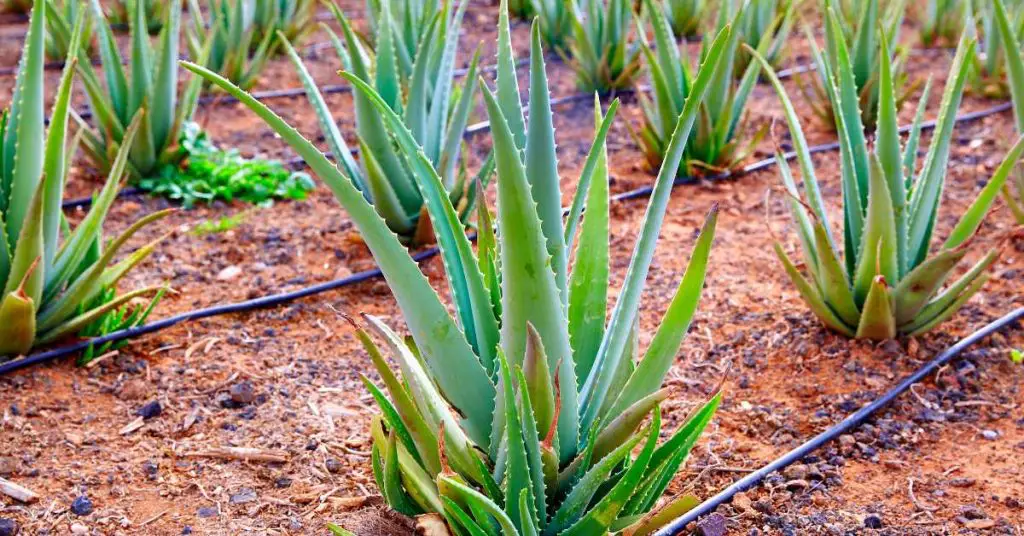
Key Details About Aloe Vera
- Type of Plant: Succulent
- Soil Requirements: Well-draining, sandy soil.
- Water Requirements: Low; allow soil to dry completely between waterings.
- Growing Habit: Rosette-forming with fleshy, gel-filled leaves.
- Bloom Time: Typically blooms in summer.
- Best Time to Plant: Spring.
Why Grow Aloe Vera in Your Garden
Aloe Vera is not only famed for its medicinal benefits, particularly the soothing gel from its leaves, but also for its architectural form and ease of care.
It’s an ideal plant for hot, dry spots in your garden where other plants might struggle to thrive. Aloe Vera also produces attractive, tubular yellow flowers that can add an exotic touch to your garden.
Aloe Vera Growing Tips
Aloe Vera performs best in full sun to partial shade and in well-draining soil. It’s crucial to avoid overwatering; let the soil dry out completely between waterings.
Aloe Vera is suitable for growing in pots, which makes it easy to move around if needed to avoid excess rain or to bring indoors during colder months.
This plant’s low water and care requirements make it a popular choice for xeriscaped gardens or as a houseplant.
10. Thyme
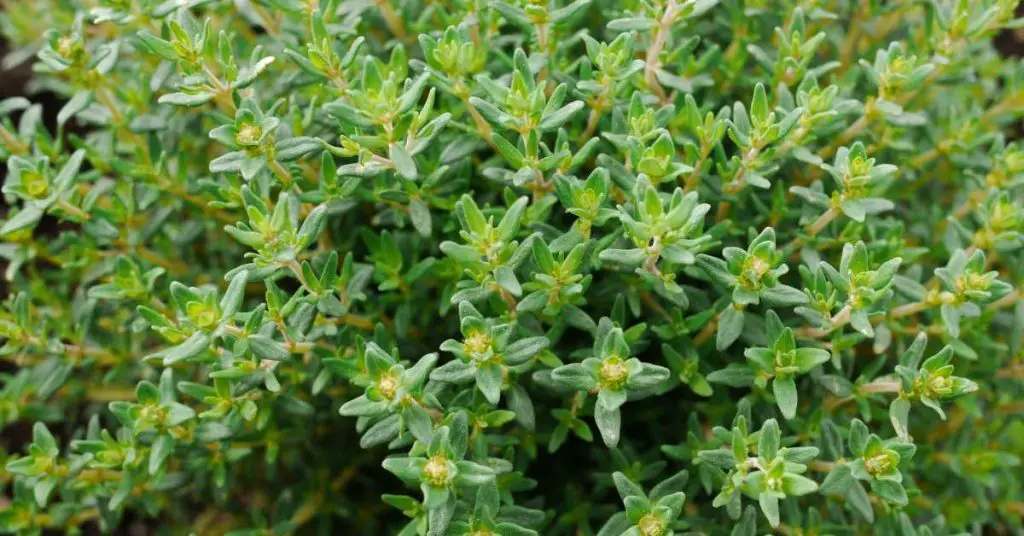
Essential Information on Thyme
- Type of Plant: Herb
- Soil Requirements: Prefers well-draining, sandy soil.
- Water Requirements: Low; drought-tolerant once established.
- Growing Habit: Low-growing, spreading.
- Bloom Time: Late spring to early summer.
- Best Time to Plant: Early spring or fall.
Why Grow Thyme in Your Garden
Thyme is a versatile culinary herb that also doubles as an excellent ground cover due to its low-growing, spreading habit. It’s highly drought-tolerant and can thrive in poor soils, making it ideal for rocky areas and garden paths where other plants might struggle.
Thyme produces small, fragrant flowers that attract bees, adding beauty and aiding in the pollination of your garden.
Thyme Growing Tips
Plant thyme in full sun to encourage the most vigorous growth and best flavor in the leaves. It needs well-draining soil and should be watered regularly until it becomes established. Once settled, thyme requires very little maintenance.
It can be harvested continuously by trimming the sprigs as needed for cooking. Over time, thyme will spread and fill in space, providing a fragrant, low-care carpet in your garden.
11. Rosemary

Key Details About Rosemary
- Type of Plant: Herb/Shrub
- Soil Requirements: Well-draining, sandy soil, slightly acidic to neutral pH.
- Water Requirements: Low; drought-tolerant once established.
- Growing Habit: Upright, can grow to substantial bush size.
- Bloom Time: Spring or summer, depending on the climate.
- Best Time to Plant: Spring or fall.
Why Grow Rosemary in Your Garden
Rosemary is not only loved for its aromatic leaves, which are commonly used in cooking, but also for its resilience to dry conditions and its ability to thrive in full sun.
The plant has a naturally upright growing habit, which makes it a great choice for vertical elements in garden design, such as hedges or background plants in flower beds.
Its flowers are usually pale blue, which attract pollinators like bees.
Rosemary Growing Tips
Rosemary thrives in full sun and well-draining soil. It should be planted in a location where it has room to expand, as mature plants can grow quite large. Water regularly until established, but be careful not to overwater, as rosemary is prone to root rot in moist conditions.
Pruning is important not only to maintain its shape but also to encourage new growth and prevent the plant from becoming woody. It is easy to take your prunings and turn them in to new plants through propagation.
12. Ornamental Grasses
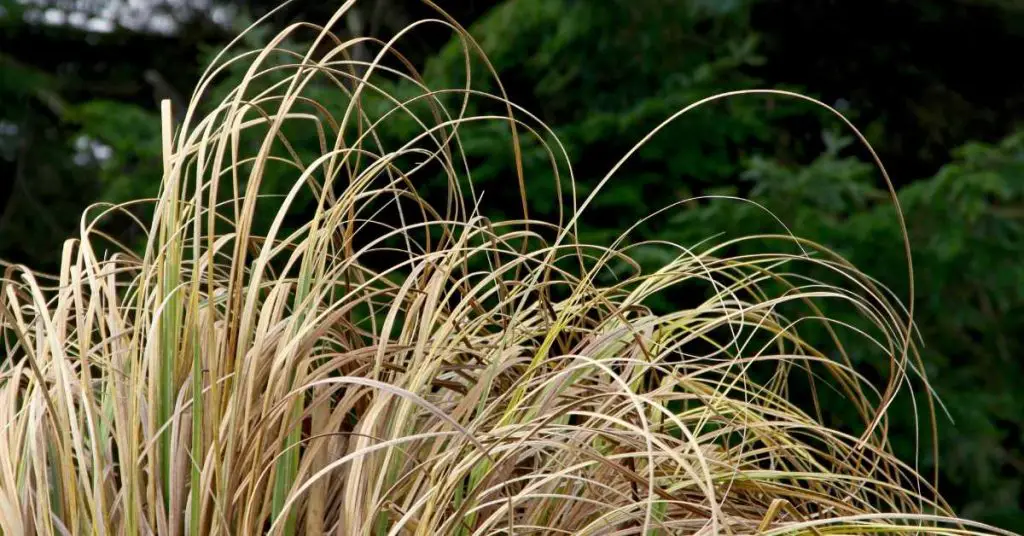
Essential Information on Ornamental Grasses
- Type of Plant: Varied (includes many species)
- Soil Requirements: Generally adaptable, but most prefer well-draining soil.
- Water Requirements: Low; many varieties are drought-tolerant.
- Growing Habit: Varies widely from low groundcovers to tall, striking features.
- Bloom Time: Typically late summer to fall.
- Best Time to Plant: Spring or early fall.
Why Grow Ornamental Grasses in Your Garden
Ornamental grasses are a fantastic choice for adding texture, movement, and year-round interest to your garden. They come in a wide range of sizes, colors, and forms, making them extremely versatile for any garden design.
These grasses are particularly valued for their drought tolerance and low maintenance needs, thriving in full sun and requiring minimal care once established.
Ornamental Grasses Growing Tips
Choose a sunny spot for planting to ensure the most vigorous growth. While ornamental grasses can adapt to a variety of soil types, they perform best in well-draining conditions.
Water regularly until established, and then reduce frequency, as these plants generally thrive on less water.
Cutting back the grasses in late winter or early spring before new growth starts helps maintain their shape and health.
13. California Poppy
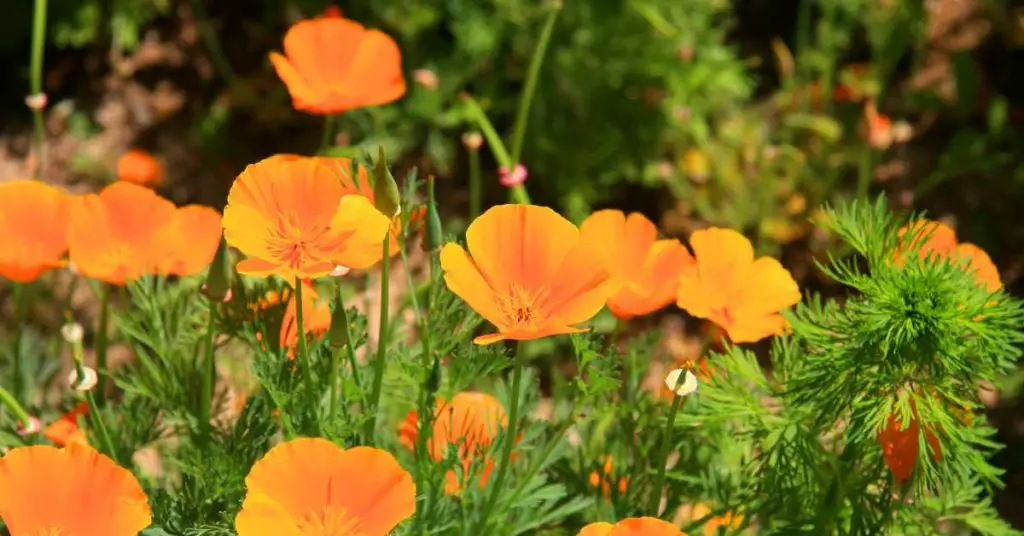
Key Details About California Poppy
- Type of Plant: Annual/Biennial
- Soil Requirements: Well-draining, poor to fertile soil.
- Water Requirements: Low; highly drought-tolerant.
- Growing Habit: Bushy, low-growing.
- Bloom Time: Spring to early summer.
- Best Time to Plant: Early spring, by sowing seeds directly in the garden.
Why Grow California Poppy in Your Garden
The California Poppy, the state flower of California, is renowned for its vibrant orange flowers that can light up any garden. It’s particularly easy to grow and care for, thriving in poor soils and full sun.
This plant is an excellent choice for adding quick color to bare spots in the garden, and its drought tolerance makes it suitable for low-water landscapes.
Poppy Growing Tips
California Poppies are best sown directly into the garden where they are to flower, as they do not transplant well. They prefer full sun and well-drained soil.
Once established, they require very little maintenance and will self-seed, providing new plants for the following year. Minimal watering is necessary, making them perfect for more arid environments or rock gardens.
14. Portulaca (Moss Rose)
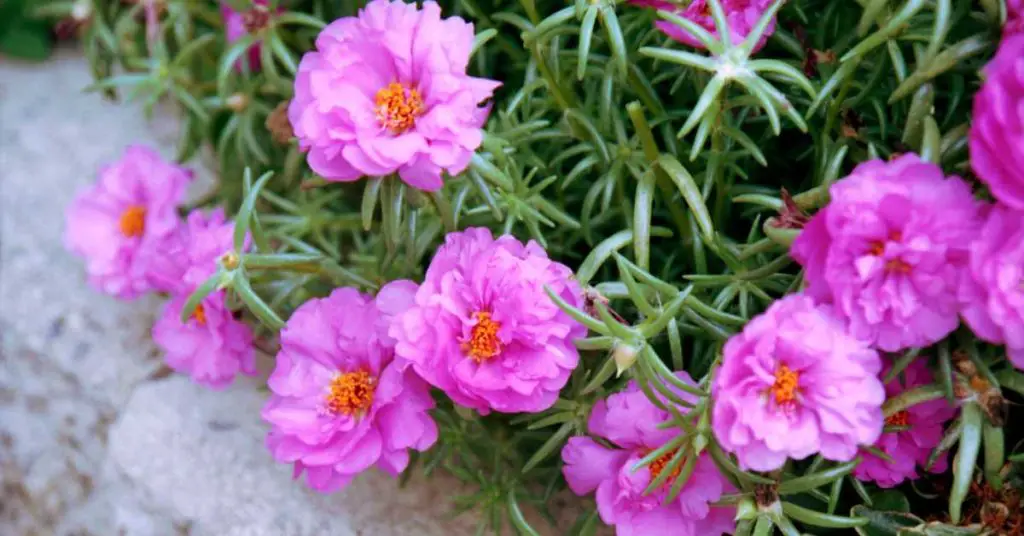
Essential Information on Portulaca (Moss Rose)
- Type of Plant: Annual
- Soil Requirements: Well-draining, sandy or loamy soil.
- Water Requirements: Low; extremely drought-tolerant.
- Growing Habit: Low-growing, spreading.
- Bloom Time: Summer.
- Best Time to Plant: Spring, after the last frost has passed.
Why Grow Portulaca in Your Garden
Portulaca, also known as Moss Rose, is admired for its colorful, rose-like flowers and its ability to thrive in harsh, sunny, and dry conditions. This plant is perfect for adding vibrant colors to rock gardens, borders, and containers.
It comes in a variety of colors, including pink, yellow, red, and white, making it a cheerful addition to any garden space.
Portulaca Growing Tips
Portulaca thrives in hot, sunny locations and prefers sandy or loamy soil that drains well. It’s best to plant it in a spot where it can receive full sun for most of the day. Water the plants sparingly; Portulaca is highly drought-resistant and does well with minimal moisture.
Due to its spreading habit, it’s great for filling gaps in garden beds or covering ground quickly.
15. Coreopsis
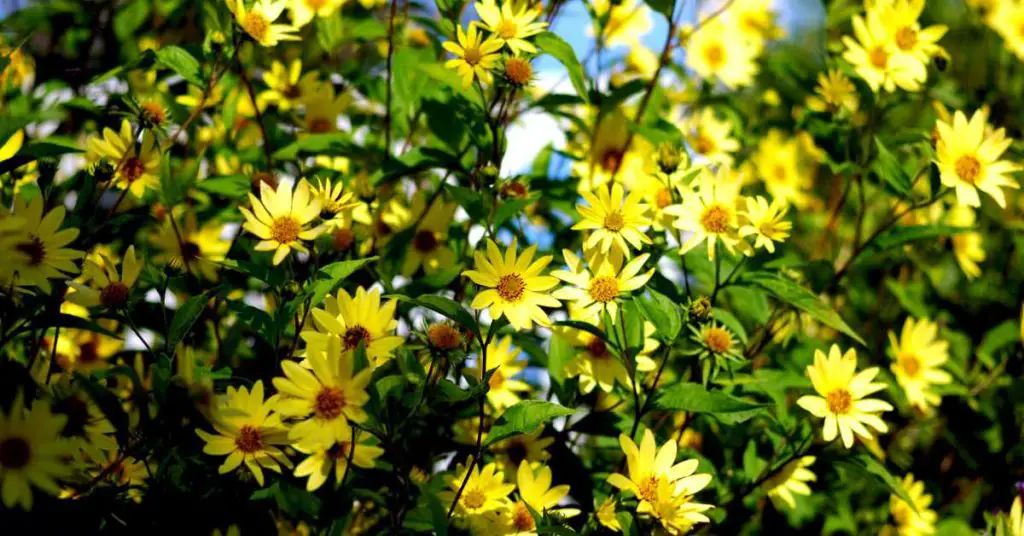
Key Details About Coreopsis
- Type of Plant: Perennial
- Soil Requirements: Well-draining, can thrive in poor soil.
- Water Requirements: Moderate to low; drought-tolerant once established.
- Growing Habit: Upright, clumping.
- Bloom Time: Early summer to fall.
- Best Time to Plant: Spring or fall.
Why Grow Coreopsis in Your Garden
Coreopsis, often called tickseed, is known for its bright, cheerful flowers that can range from yellow and gold to pink and red. It is a staple in many perennial gardens due to its long blooming period and easy care.
Coreopsis attracts pollinators such as butterflies, making it not only beautiful but also beneficial for the garden ecosystem.
Growing Tips
Plant Coreopsis in a location that receives full sun for best flowering results, although it can tolerate partial shade. It isn’t fussy about soil type but performs best in well-draining conditions.
Water regularly until the plant is established, and then you can reduce watering, as Coreopsis is quite drought-resistant.
Deadheading the spent flowers will promote more blooms and extend the blooming period.
16. Bearded Iris
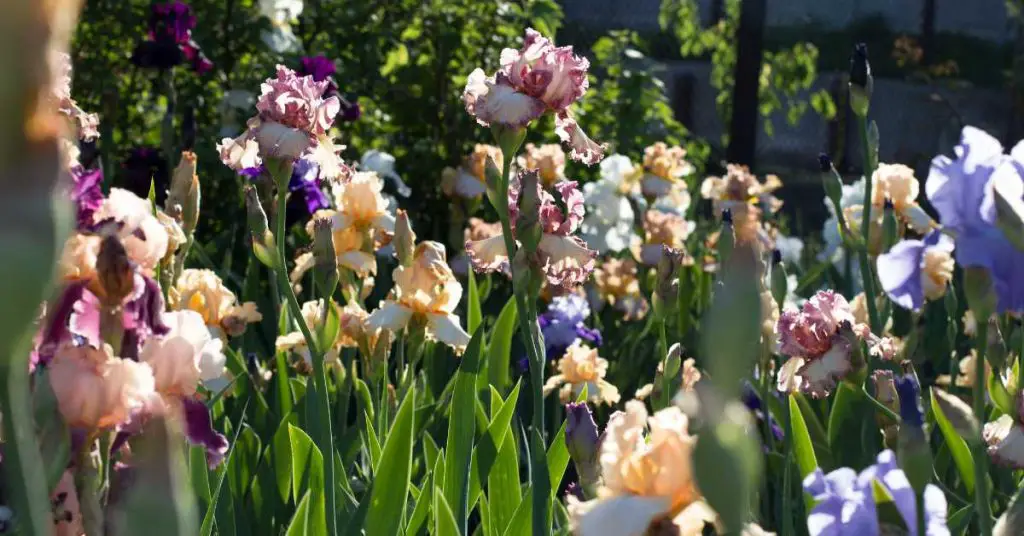
Essential Information on Bearded Iris
- Type of Plant: Perennial
- Soil Requirements: Well-draining, slightly acidic to neutral soil.
- Water Requirements: Moderate; requires well-drained soil to prevent rot.
- Growing Habit: Clumping, with tall, upright flowers.
- Bloom Time: Late spring to early summer.
- Best Time to Plant: Late summer to early fall.
Why Grow Bearded Iris in Your Garden
Bearded Iris is cherished for its dramatic flowers, which come in a wide array of colors and patterns. This plant is an excellent choice for gardeners who want to add a touch of elegance and height to their flower beds.
Bearded Iris is also known for its ability to divide and spread, offering gardeners a way to expand their garden displays without additional cost.
Growing Tips
Bearded Iris thrives in full sun and requires at least six hours of direct sunlight daily. The key to successful Iris growth is good soil drainage; waterlogged conditions can lead to bulb rot. Plant the Iris rhizomes shallowly so that the tops are exposed to the sun.
After blooming, cut back the foliage to encourage robust growth for the next season. Regular division every few years helps to keep the plants healthy and blooming vigorously.
17. Zinnia
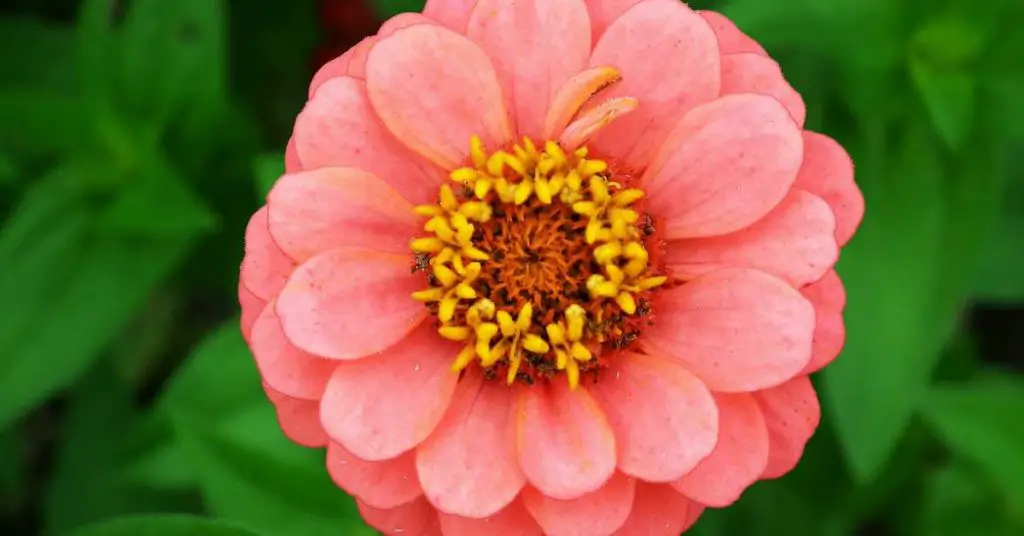
Key Details About Zinnia
- Type of Plant: Annual
- Soil Requirements: Prefers well-draining, fertile soil.
- Water Requirements: Moderate; water regularly but allow soil to dry between watering.
- Growing Habit: Upright, bushy.
- Bloom Time: Summer to frost.
- Best Time to Plant: Spring, after the last frost.
Why Grow Zinnia in Your Garden
Zinnias are one of the easiest flowers to grow, as they grow quickly and bloom heavily, making them perfect for cutting gardens or as a vibrant addition to any annual flower bed.
They come in a dazzling array of colors and shapes, from single to double-flowered varieties, providing endless visual appeal.
Zinnias are particularly beloved for their ability to attract butterflies, creating a lively and dynamic garden.
Growing Tips
Zinnias thrive in full sun and require six or more hours of direct sunlight daily. They prefer well-drained, fertile soil and benefit from regular watering, especially during dry spells. To ensure a continuous display of flowers, deadhead spent blooms regularly.
This not only keeps the plants looking tidy but also encourages more flowers to develop. Zinnias are prone to powdery mildew if conditions are too damp, so space the plants properly to ensure good air circulation.
18. Daylily
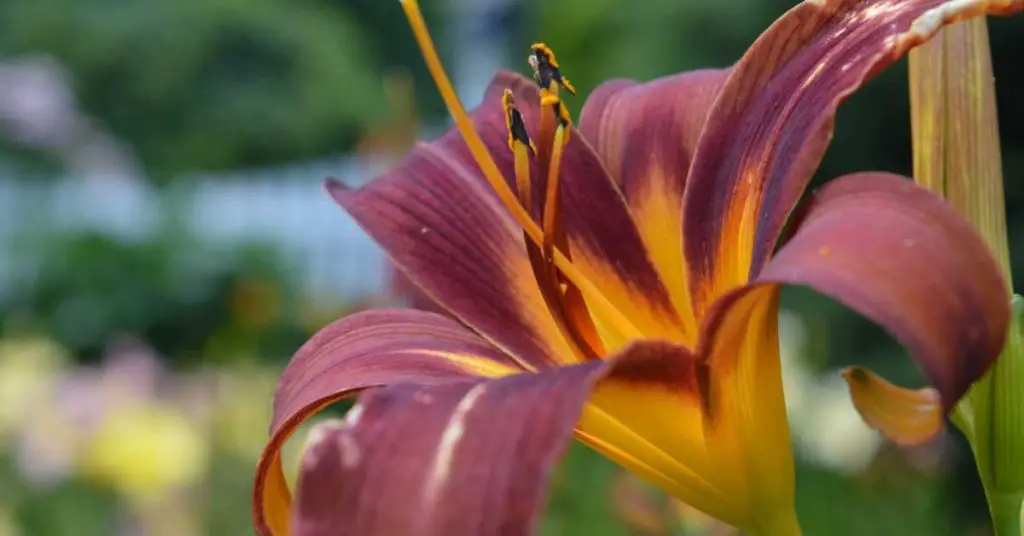
Key Details About Daylily
- Type of Plant: Perennial
- Soil Requirements: Well-draining, moderately fertile soil.
- Water Requirements: Moderate; drought-tolerant once established.
- Growing Habit: Clumping, with grass-like leaves and tall flower stalks.
- Bloom Time: Early to mid-summer.
- Best Time to Plant: Spring or fall.
Why Grow Daylily in Your Garden
Daylilies are highly valued for their beauty, ease of care, and ability to thrive in a variety of climates and soils. Known for their vibrant trumpet-shaped flowers, they can add a splash of color to any garden.
Each flower blooms for just one day, but numerous buds on each plant ensure a prolific display throughout the season. Daylilies are also known for their adaptability and resilience, making them a favorite among both novice and experienced gardeners.
Growing Tips
Daylilies perform best in full sun but can tolerate partial shade, where they may produce fewer flowers. They prefer well-drained soil and should be watered regularly during the growing season, especially if rainfall is scarce.
Mulching around the plants can help retain moisture and suppress weeds. After a few years, clumps of daylilies should be divided to maintain their vigor and encourage abundant flowering.
19. Bougainvillea
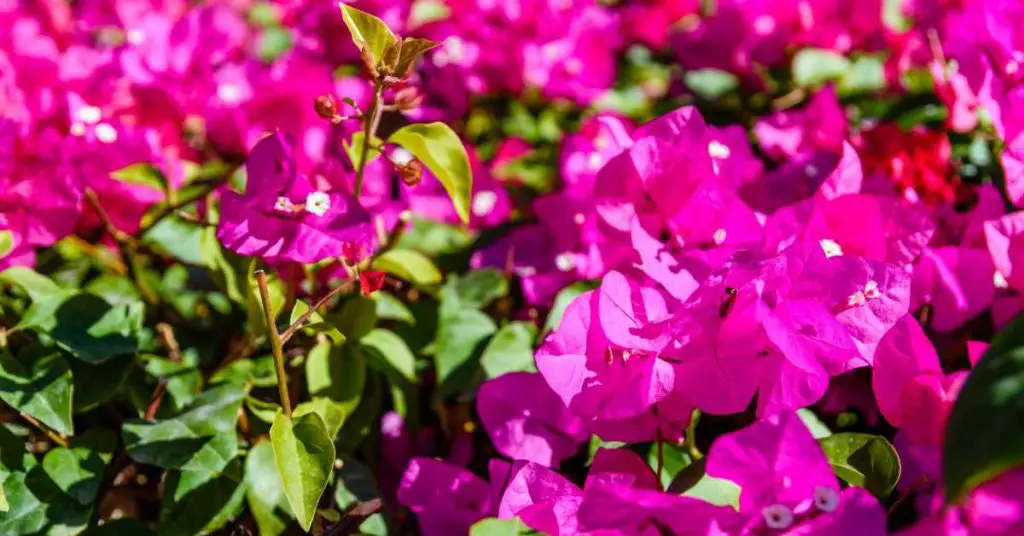
Essential Information on Bougainvillea
- Type of Plant: Evergreen shrub/vine
- Soil Requirements: Well-draining, slightly acidic to neutral soil.
- Water Requirements: Low; drought-tolerant once established.
- Growing Habit: Climbing, with thorny branches and vibrant papery bracts surrounding small flowers.
- Bloom Time: Blooms in cycles throughout warmer months.
- Best Time to Plant: Spring, once the threat of frost has passed.
Why Grow Bougainvillea in Your Garden
Bougainvillea is renowned for its spectacular display of colorful bracts—pink, purple, red, orange, white, or yellow—that appear during the warmer months.
This vigorous vine is perfect for growing on walls, fences, and pergolas, where it can add a dramatic flourish of color.
Despite its lush appearance, bougainvillea is surprisingly tough and can withstand hot, dry conditions once established.
Growing Tips
Bougainvillea thrives in full sun and requires at least six hours of sunlight a day to produce the best blooms. It needs well-drained soil and should be watered sparingly; overwatering can diminish bloom production and lead to root rot.
Training this plant on a trellis or similar support can help manage its growth and enhance its ornamental value. Pruning should be done after each bloom cycle to promote new growth and more colorful bracts.
Common Questions About Growing Drought Tolerant Plants
When it comes to gardening with drought-tolerant plants, many gardeners, both new and experienced, have questions about best practices. Here are some common inquiries that might help you understand more about cultivating these resilient plants.
What are the best mulches for drought-tolerant gardens?
Using the right mulch can make a big difference in your drought-tolerant garden. Organic mulches like bark chips, straw, or leaf mold are excellent because they help retain moisture, suppress weeds, and add nutrients to the soil as they decompose. For a more permanent solution, inorganic mulches such as gravel or stone chips can also be effective, particularly in very dry environments, as they minimize evaporation and maintain soil temperature.
How often should I water my drought-tolerant plants?
Even though drought-tolerant plants are adapted to survive with less water, they do need some watering, especially during prolonged dry spells. Initially, water new plants regularly to help them establish roots. Once established, the frequency of watering can decrease significantly. Typically, a deep watering once every two weeks is sufficient, but this can vary based on your specific climate and soil conditions.
Can drought-tolerant plants survive in humid climates?
Yes, many drought-tolerant plants can adapt to humid climates as long as their other needs are met, particularly soil drainage. Good drainage is crucial because even drought-tolerant plants can suffer from root rot if the soil stays wet for too long.
How do I amend soil for drought-tolerant plants?
Improving drainage is key for drought-tolerant plants. You can enhance soil drainage by adding coarse sand, perlite, or small gravel to your garden soil. Organic matter, like compost, can also help by improving soil structure and allowing roots to penetrate more easily, which is particularly helpful for water absorption and retention.
FAQs
What Makes a Plant Drought-Tolerant?
Drought-tolerant plants have adaptations that allow them to survive in dry conditions with minimal water. These adaptations can include deep root systems that tap into underground water supplies, thick leaves that store water, or waxy coatings that reduce water loss. Such plants are ideal for regions with low rainfall or for gardeners who prefer low-maintenance landscaping. By incorporating drought-tolerant plants into your garden, you can ensure a resilient landscape that thrives despite water scarcity.
Can Drought-Tolerant Plants Survive in Humid Climates?
Yes, many drought-tolerant plants can survive in humid climates, but they may require some care adjustments. The key to success is ensuring good soil drainage and air circulation around the plants. This helps prevent issues like root rot and fungal diseases, which are more prevalent in humid conditions. While these plants are adaptable, they do best when they are not subjected to prolonged dampness at their roots or on their leaves.
How Do I Amend Soil for Drought-Tolerant Plants?
Amending soil for drought-tolerant plants involves enhancing its drainage capabilities. You can improve drainage by mixing in coarse sand, perlite, or small gravel with your existing soil. Additionally, incorporating organic matter such as compost can help by improving soil structure, allowing roots to penetrate more deeply and access moisture retained below the surface. These amendments help mimic the natural growing conditions these plants prefer, reducing water stagnation and promoting healthy growth.
What Are the Best Mulches for Drought-Tolerant Gardens?
The best mulches for drought-tolerant gardens are those that retain moisture, suppress weeds, and reduce temperature fluctuations. Organic mulches like shredded bark, straw, and leaf mold are excellent because they decompose slowly, enriching the soil as they break down. Inorganic mulches, such as gravel or pebbles, can also be effective, especially around succulents and other plants that prefer not to have moist organic material close to their stems. Each type of mulch has its benefits, so choose according to the specific needs of your plants and local climate conditions.
How Often Should I Water My Drought-Tolerant Plants?
Initially, water your drought-tolerant plants regularly to help them establish a strong root system. Once established, these plants require significantly less water.
The frequency of watering will depend on your specific climate, soil type, and the plant’s maturity. A good rule of thumb is to water deeply but infrequently, allowing the soil to dry out completely between waterings.
This method encourages deeper root growth and helps plants become more resilient to drought conditions.
Conclusion
Choosing drought-tolerant plants for your garden is a practical and beautiful way to create a sustainable landscape that thrives under sun-drenched conditions.
These plants not only conserve water but also reduce maintenance needs, making them ideal for gardeners looking to enjoy a vibrant garden without the constant upkeep.
From the aromatic lavender to the striking bougainvillea, each plant we’ve discussed offers unique benefits and brings its own splash of color and texture to your outdoor space.
As you select plants for your garden, consider their specific needs and how well they’ll adapt to your local environment.
Remember, the key to a successful drought-tolerant garden lies in proper soil preparation, appropriate watering practices, and choosing the right plants that naturally thrive in arid conditions.
By following these guidelines, you can ensure a lush, resilient garden that’s both eco-friendly and visually appealing.




